Increasing the Compressive Strength of Helicoidal Laminates after Low-Velocity Impact upon Mixing with 0° Orientation Plies and Its Analysis
Abstract
1. Introduction
2. Materials and Experimental Setup
2.1. Specimens Design
2.2. Test Equipment
3. Results and Discussion
3.1. Experimental Results
3.2. Impact Load
3.3. Damage Area
3.4. Analysis on Damage Shape with Strain Energy Release Rate and Shear Stress
3.5. CAI Characteristics
4. Conclusions
- The laminates having pitch angles of 10° and 20° were found to possess higher CAI strengths. However, having a large number of 0° plies yielded a larger damage area because of the easy propagation of cracks in them. The continuous 0° plies on the impact surface also yielded larger indentation, thereby leading to a decrease in the transverse stiffness and the impact load. Lower impact load resulted in less damage, which could be estimated from the energy absorption.
- The specimen with the plies of 10° and 20° pitch angles and continuous 0° plies (H5) yielded the highest CAI strength despite more damage than the one with more plies in 0° and a higher compressive modulus (H6), because a small pitch angle (5°) should be avoided due to the weak constraint between adjacent plies. Therefore, a set of proper pitch angles (10° and 20°) and proper arrangement of 0° plies are the key parameters for CAI strength.
- Analysis on the strain energy release rate and maximum could be beneficial in the prediction of damage characteristics.
- The first ply in all specimens is of 0°; therefore, a method should be proposed to evaluate the effect of the first ply direction on its performance. Non-symmetric and non-uniform layup with low coupling stiffness could be optimized to obtain better performance.
- The mechanism of ply pitch angle affecting impact load, indentation, damage, CAI strength, and critical buckling load needs further investigation to obtain the optimal ply setups for a variety of services.
Author Contributions
Funding
Institutional Review Board Statement
Informed Consent Statement
Data Availability Statement
Conflicts of Interest
References
- Abrate, S. Impact on Laminated Composite Materials. Appl. Mechan. Rev. 1991, 44, 155–190. [Google Scholar] [CrossRef]
- Nilsson, K.-F.; Asp, L.E.; Alpman, J.E.; Nystedt, L. Delamination Buckling and Growth for Delaminations at Different Depths in a Slender Composite Panel. Int. J. Solids Struct. 2001, 38, 3039–3071. [Google Scholar] [CrossRef]
- Bouligand, Y. Twisted Fibrous Arrangements in Biological Materials and Cholesteric Mesophases. Tissue Cell 1972, 4, 189–217. [Google Scholar] [CrossRef] [PubMed]
- Apichattrabrut, T.; Ravi-Chandar, K. Helicoidal Composites. Mechan. Adv. Mater. Struct. 2006, 13, 61–76. [Google Scholar] [CrossRef]
- Weaver, J.C.; Milliron, G.W.; Miserez, A.; Evans-Lutterodt, K.; Herrera, S.; Gallana, I.; Mershon, W.J.; Swanson, B.; Zavattieri, P.; DiMasi, E.; et al. The Stomatopod Dactyl Club: A Formidable Damage-Tolerant Biological Hammer. Science 2012, 336, 1275–1280. [Google Scholar] [CrossRef] [PubMed]
- Zimmermann, E.A.; Gludovatz, B.; Schaible, E.; Dave, N.K.N.; Yang, W.; Meyers, M.A.; Ritchie, R.O. Mechanical Adaptability of the Bouligand-Type Structure in Natural Dermal Armour. Nat. Commun. 2013, 4, 2634. [Google Scholar] [CrossRef] [PubMed]
- Cheng, L.; Wang, L.; Karlsson, A.M. Mechanics-Based Analysis of Selected Features of the Exoskeletal Microstructure of Popillia japonica. J. Mater. Res. 2009, 24, 3253–3267. [Google Scholar] [CrossRef]
- Grunenfelder, L.K.; Suksangpanya, N.; Salinas, C.; Milliron, G.; Yaraghi, N.; Herrera, S.; Evans-Lutterodt, K.; Nutt, S.R.; Zavattieri, P.; Kisailus, D. Bio-Inspired Impact-Resistant Composites. Acta Biomater. 2014, 10, 3997–4008. [Google Scholar] [CrossRef]
- Yaraghi, N.A.; Guarín-Zapata, N.; Grunenfelder, L.K.; Hintsala, E.; Bhowmick, S.; Hiller, J.M.; Betts, M.; Principe, E.L.; Jung, J.; Sheppard, L.; et al. A Sinusoidally Architected Helicoidal Biocomposite. Adv. Mater. 2016, 28, 6835–6844. [Google Scholar] [CrossRef]
- Suksangpanya, N.; Yaraghi, N.A.; Kisailus, D.; Zavattieri, P. Twisting Cracks in Bouligand Structures. J. Mechan. Behav. Biomed. Mater. 2017, 76, 38–57. [Google Scholar] [CrossRef]
- Suksangpanya, N.; Yaraghi, N.A.; Pipes, R.B.; Kisailus, D.; Zavattieri, P. Crack Twisting and Toughening Strategies in Bouligand Architectures. Int. J. Solids Struct. 2018, 150, 83–106. [Google Scholar] [CrossRef]
- Mencattelli, L.; Pinho, S.T. Realising Bio-Inspired Impact Damage-Tolerant Thin-Ply CFRP Bouligand Structures via Promoting Diffused Sub-Critical Helicoidal Damage. Compos. Sci. Technol. 2019, 182, 107684. [Google Scholar] [CrossRef]
- Mencattelli, L.; Pinho, S.T. Herringbone-Bouligand CFRP Structures: A New Tailorable Damage-Tolerant Solution for Damage Containment and Reduced Delaminations. Compos. Sci. Technol. 2020, 190, 108047. [Google Scholar] [CrossRef]
- Mencattelli, L.; Pinho, S.T. Ultra-Thin-Ply CFRP Bouligand Bio-Inspired Structures with Enhanced Load-Bearing Capacity, Delayed Catastrophic Failure and High Energy Dissipation Capability. Compos. Part A Appl. Sci. Manufact. 2020, 129, 105655. [Google Scholar] [CrossRef]
- Liu, J.L.; Lee, H.P.; Tan, V.B.C. Effects of Inter-Ply Angles on the Failure Mechanisms in Bioinspired Helicoidal Laminates. Compos. Sci. Technol. 2018, 165, 282–289. [Google Scholar] [CrossRef]
- Liu, J.L.; Lee, H.P.; Lai, K.S.; Tan, V.B.C. Bio-Inspired Laminates of Different Material Systems. J. Appl. Mechan. 2020, 87, 31007. [Google Scholar] [CrossRef]
- Liu, J.L.; Lim, E.W.L.; Sun, Z.P.; Wang, J.; Tay, T.E.; Tan, V.B.C. Improving Strength and Impact Resistance of 3D Printed Components with Helicoidal Printing Direction. Int. J. Impact Eng. 2022, 169, 104320. [Google Scholar] [CrossRef]
- Liu, J.L.; Lee, H.P.; Kong, S.H.R.; Tan, V.B.C. Improving Laminates through Non-Uniform Inter-Ply Angles. Composites Part A Appl. Sci. Manufact. 2019, 127, 105625. [Google Scholar] [CrossRef]
- Jiang, H.; Ren, Y.; Liu, Z.; Zhang, S.; Lin, Z. Low-Velocity Impact Resistance Behaviors of Bio-Inspired Helicoidal Composite Laminates with Non-Linear Rotation Angle Based Layups. Compos. Struct. 2019, 214, 463–475. [Google Scholar] [CrossRef]
- Pinto, F.; Iervolino, O.; Scarselli, G.; Ginzburg, D.; Meo, M. Bioinspired Twisted Composites Based on Bouligand Structures. In Proceedings of the SPIE Smart Structures and Materials + Nondestructive Evaluation and Health Monitoring, Las Vegas, NE, USA, 15 April 2016; Martín-Palma, R.J., Lakhtakia, A., Knez, M., Eds.; SPIE: Las Vegas, NE, USA, 2016; p. 97970E. [Google Scholar]
- Ginzburg, D.; Pinto, F.; Iervolino, O.; Meo, M. Damage Tolerance of Bio-Inspired Helicoidal Composites under Low Velocity Impact. Compos. Struct. 2017, 161, 187–203. [Google Scholar] [CrossRef]
- Sebaey, T.A.; González, E.V.; Lopes, C.S.; Blanco, N.; Maimí, P.; Costa, J. Damage Resistance and Damage Tolerance of Dispersed CFRP Laminates: Effect of the Mismatch Angle between Plies. Compos. Struct. 2013, 101, 255–264. [Google Scholar] [CrossRef]
- Sebaey, T.A.; González, E.V.; Lopes, C.S.; Blanco, N.; Costa, J. Damage Resistance and Damage Tolerance of Dispersed CFRP Laminates: Effect of Ply Clustering. Compos. Struct. 2013, 106, 96–103. [Google Scholar] [CrossRef]
- Wagih, A.; Maimí, P.; Blanco, N.; García-Rodríguez, S.M.; Guillamet, G.; Issac, R.P.; Turon, A.; Costa, J. Improving Damage Resistance and Load Capacity of Thin-Ply Laminates Using Ply Clustering and Small Mismatch Angles. Compos. Part A Appl. Sci. Manufact. 2019, 117, 76–91. [Google Scholar] [CrossRef]
- Sebaey, T.A.; González, E.V.; Lopes, C.S.; Blanco, N.; Costa, J. Damage Resistance and Damage Tolerance of Dispersed CFRP Laminates: The Bending Stiffness Effect. Compos. Struct. 2013, 106, 30–32. [Google Scholar] [CrossRef]
- Sebaey, T.A.; Mahdi, E. Using Thin-Plies to Improve the Damage Resistance and Tolerance of Aeronautical CFRP Composites. Compos. Part A Appl. Sci. Manufact. 2016, 86, 31–38. [Google Scholar] [CrossRef]
- Saito, H.; Morita, M.; Kawabe, K.; Kanesaki, M.; Takeuchi, H.; Tanaka, M.; Kimpara, I. Effect of Ply-Thickness on Impact Damage Morphology in CFRP Laminates. J. Reinforced Plast. Compos. 2011, 30, 1097–1106. [Google Scholar] [CrossRef]
- Yuan, Y.; Zhang, X.; Li, X.; Zhang, Q.; Yin, Q.; Liu, W.; Zhang, Z. Manipulating Impact Damage Modes in Composite Laminates by Helical Pitch Angle and Ply Thickness. Eng. Fract. Mechan. 2022, 265, 108383. [Google Scholar] [CrossRef]
- Nettles, A.T.; Sabo, S. Compression after Impact Strength of Thin Laminates with Various Percentage of 0° Plies. J. Compos. Mater. 2014, 48, 345–354. [Google Scholar] [CrossRef]
- Sasikumar, A.; Trias, D.; Costa, J.; Blanco, N.; Orr, J.; Linde, P. Effect of Ply Thickness and Ply Level Hybridization on the Compression after Impact Strength of Thin Laminates. Compos. Part A Appl. Sci. Manufact. 2019, 121, 232–243. [Google Scholar] [CrossRef]
- ASTM D7136; D30 Committee Test Method for Measuring the Damage Resistance of a Fiber-Reinforced Polymer Matrix Composite to a Drop-Weight Impact Event. ASTM International: West Conshohocken, PE, USA, 2020.
- ASTM D7137; D30 Committee Test Method for Compressive Residual Strength Properties of Damaged Polymer Matrix Composite Plates. ASTM International: West Conshohocken, PE, USA, 2017.
- Olsson, R. Mass Criterion for Wave Controlled Impact Response of Composite Plates. Compos. Part A Appl. Sci. Manufact. 2000, 31, 879–887. [Google Scholar] [CrossRef]
- Zhu, Q.; Yu, Z. A Perturbation-Based Model for the Prediction of Responses Involving Delamination during Small Mass Impacts on Orthotropic Composite Plates. Compos. Sci. Technol. 2021, 208, 108754. [Google Scholar] [CrossRef]
- Abrate, S. Impact on Composite Structures; Cambridge University Press: Cambridge, MA, USA, 1998; ISBN 0-521-47389-6. [Google Scholar]
- Abrate, S. Modeling of Impacts on Composite Structures. Compos. Struct. 2001, 51, 129–138. [Google Scholar] [CrossRef]
- Johnson, K.L.; Johnson, K.L. Contact Mechanics; Cambridge University Press: Cambridge, MA, USA, 1987; ISBN 0-521-34796-3. [Google Scholar]
- Tan, T.M.; Sun, C.T. Use of Statical Indentation Laws in the Impact Analysis of Laminated Composite Plates. J. Appl. Mech. 1985, 52, 6–12. [Google Scholar] [CrossRef]
- Yu, Z.; Gao, S. Increase of Contact Radius Due to Deflection in Low Velocity Impact of Composite Laminates and Prediction of Delamination Threshold Load. Compos. Struct. 2016, 147, 286–293. [Google Scholar] [CrossRef]
- Olsson, R. Analytical Prediction of Damage Due to Large Mass Impact on Thin Ply Composites. Compos. Part A Appl. Sci. Manufact. 2015, 72, 184–191. [Google Scholar] [CrossRef]
- Belardi, V.G.; Fanelli, P.; Vivio, F. Bending Analysis with Galerkin Method of Rectilinear Orthotropic Composite Circular Plates Subject to Transversal Load. Compos. Part B Eng. 2018, 140, 250–259. [Google Scholar] [CrossRef]
- Belardi, V.G.; Fanelli, P.; Vivio, F. Application of the Ritz method for the bending and stress analysis of thin rectilinear orthotropic composite sector plates. Thin Walled Struct. 2023, 183, 110374. [Google Scholar] [CrossRef]
- Barbero, E.J. Introduction to Composite Materials Design; CRC Press: Boca Raton, FL, USA, 2010; ISBN 0-429-10947-4. [Google Scholar]
- Li, D.H.; Liu, Y.; Zhang, X. Low-velocity impact responses of the stiffened composite laminated plates based on the progressive failure model and the layerwise/solid-elements method. Compos. Struct. 2014, 110, 249–275. [Google Scholar] [CrossRef]
- Wang, J.; Xiao, J. Analytical solutions of bending analysis and vibration of rectangular nano laminates with surface effects. Appl. Math. Modell. 2022, 110, 663–673. [Google Scholar] [CrossRef]
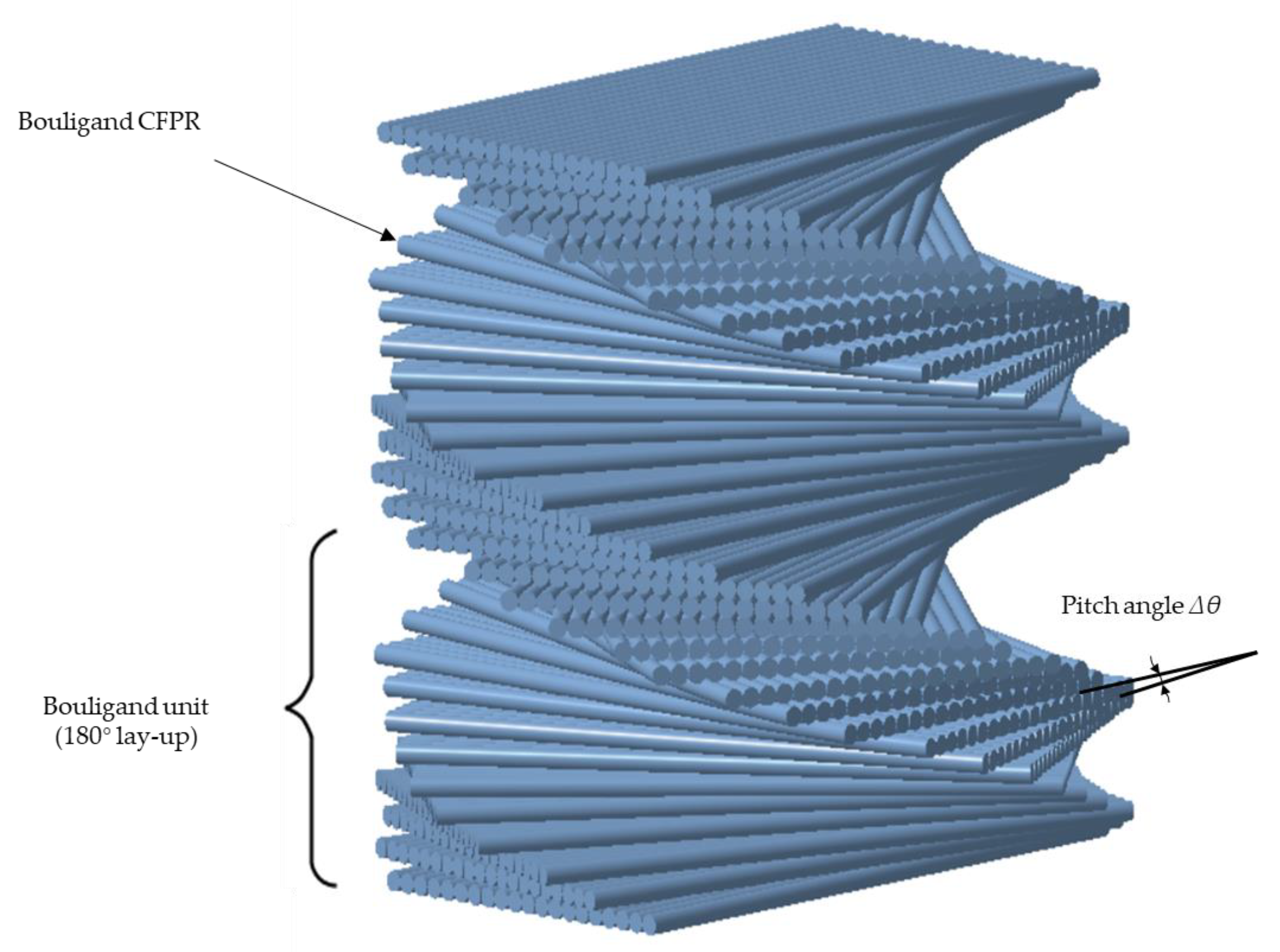

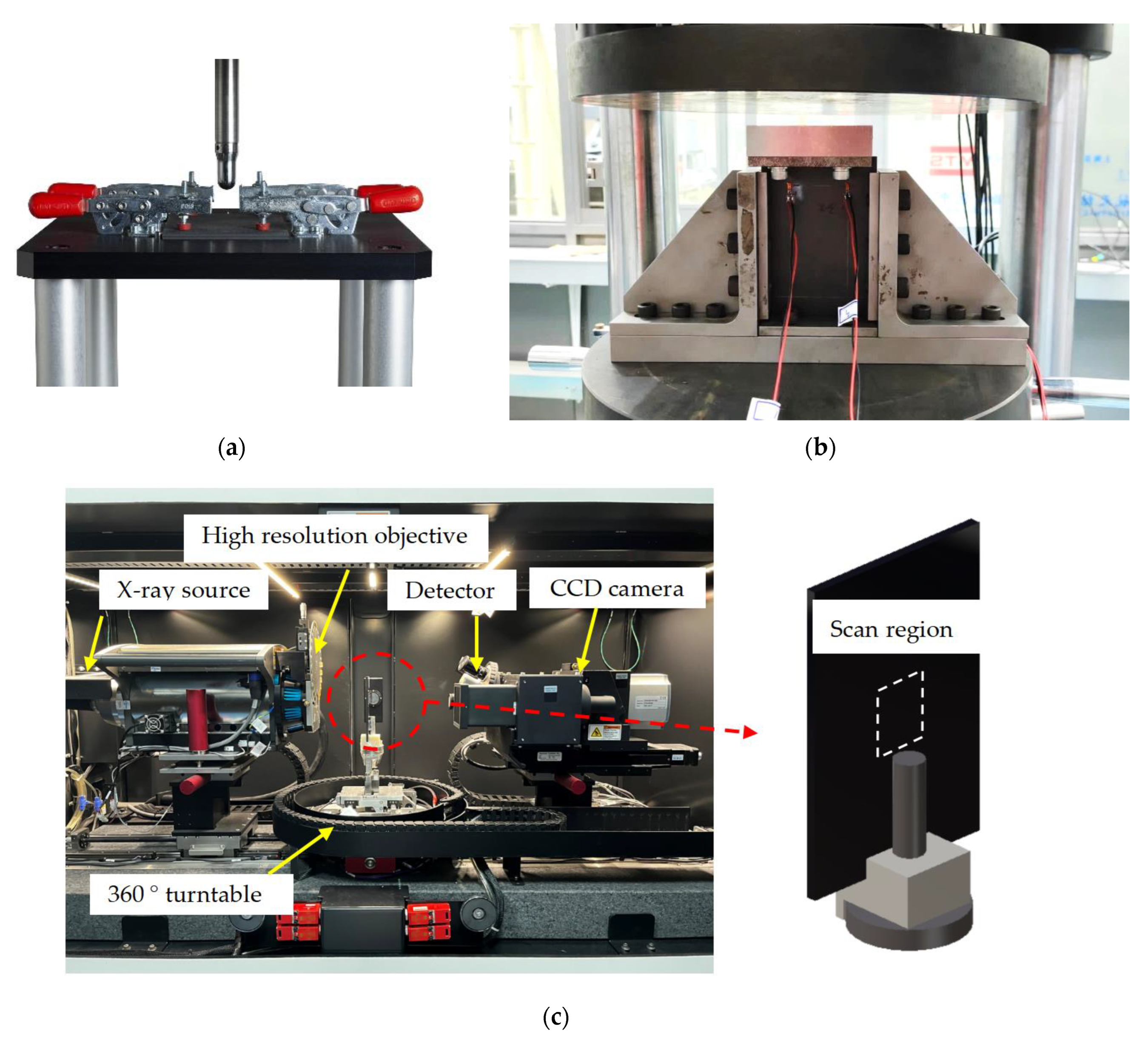
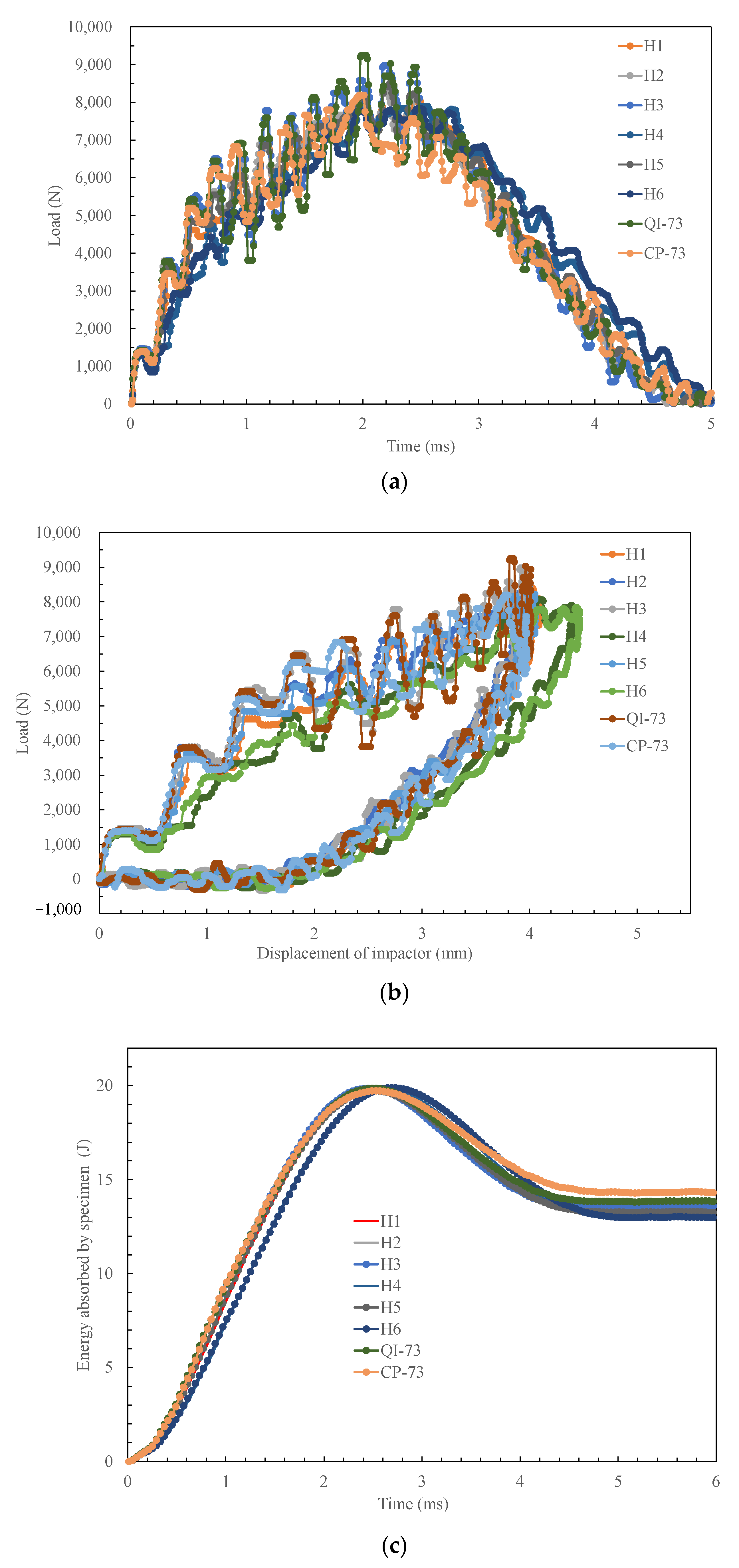

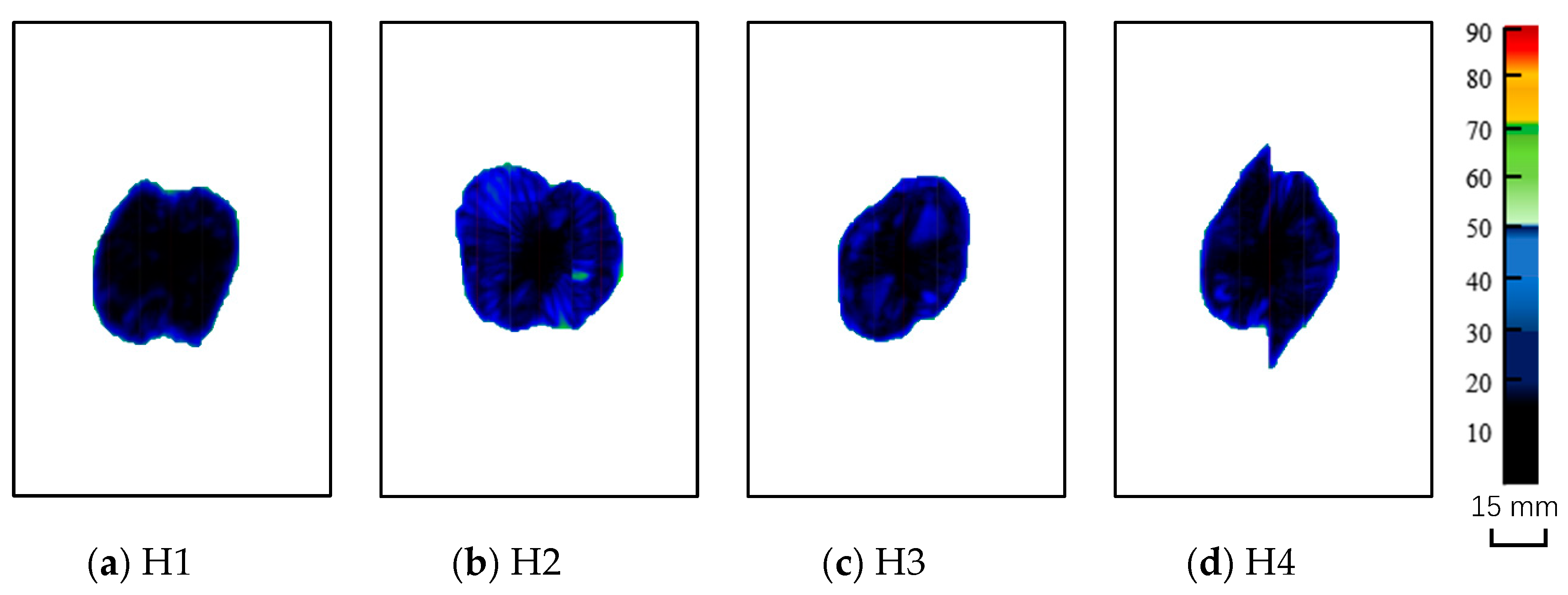
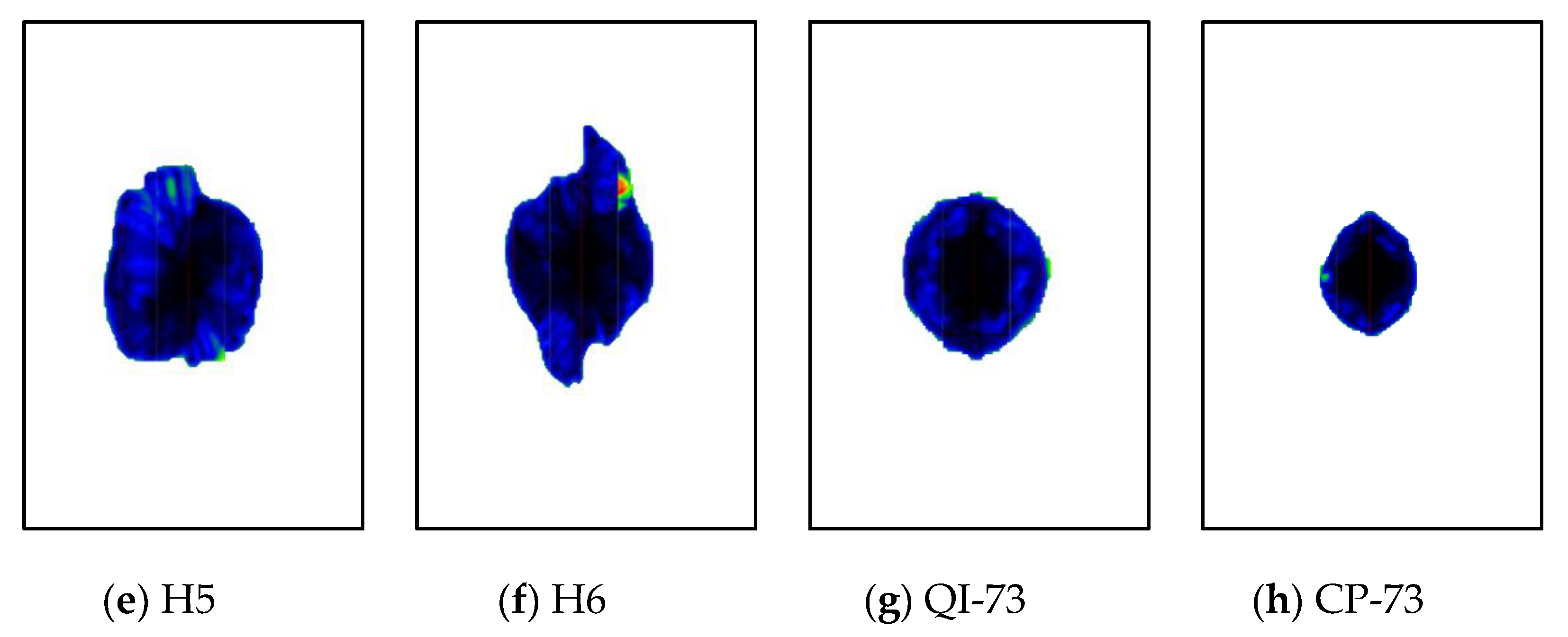
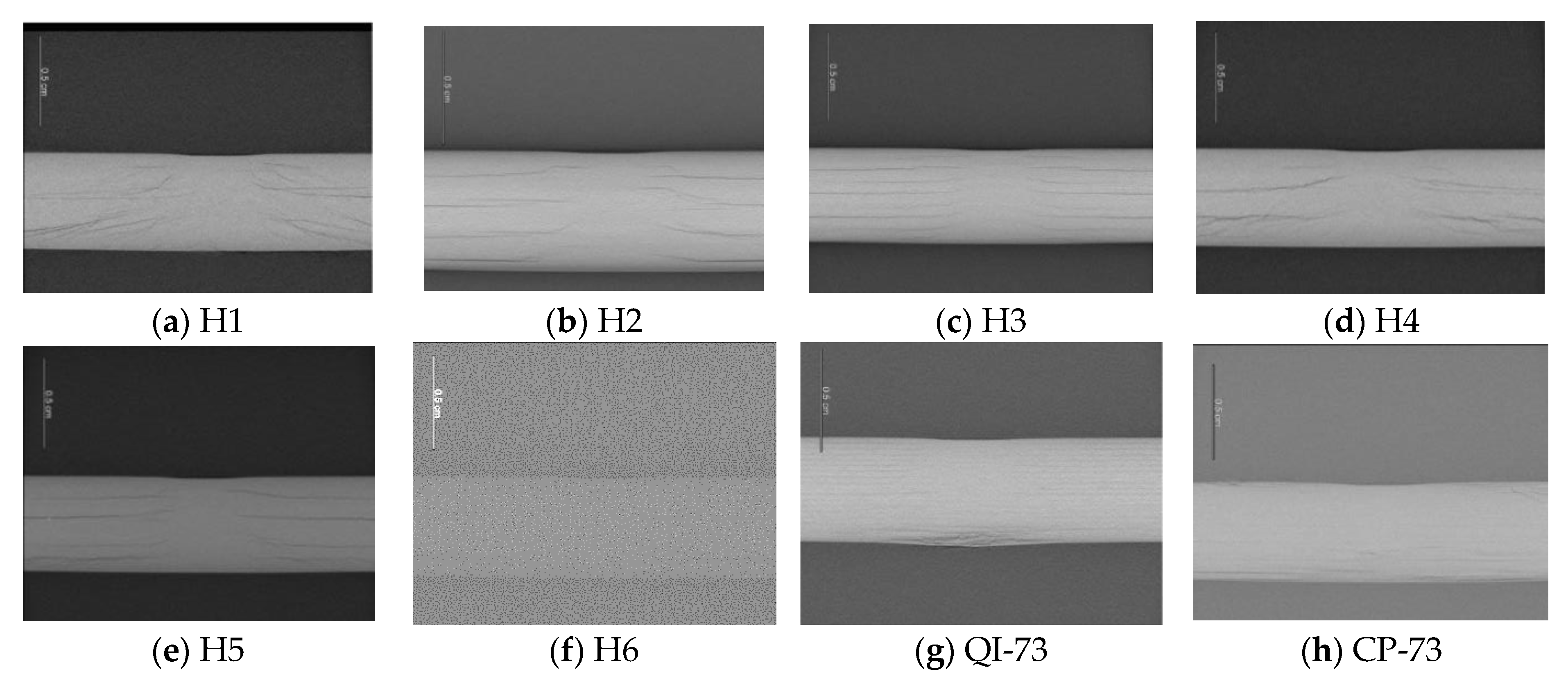



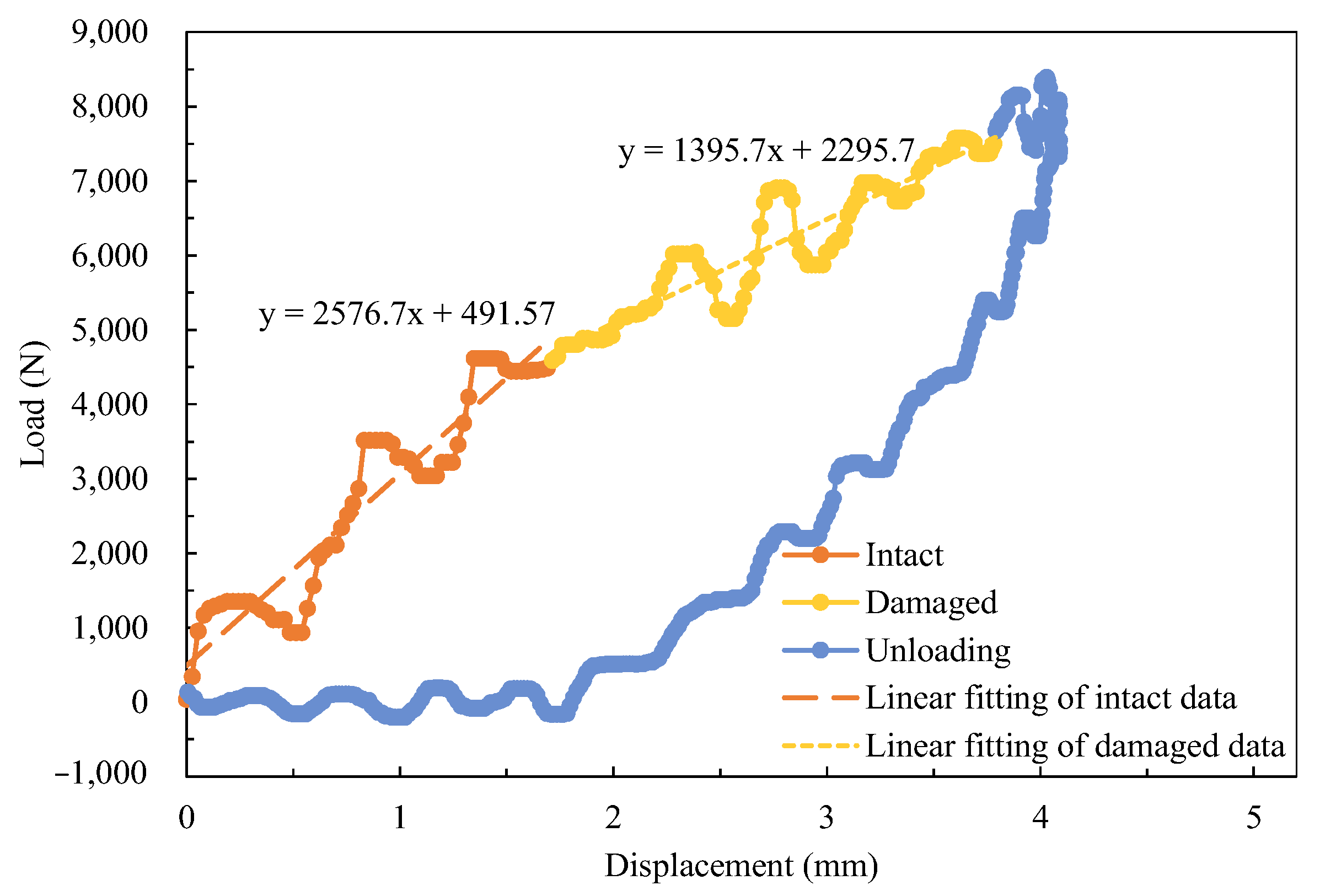
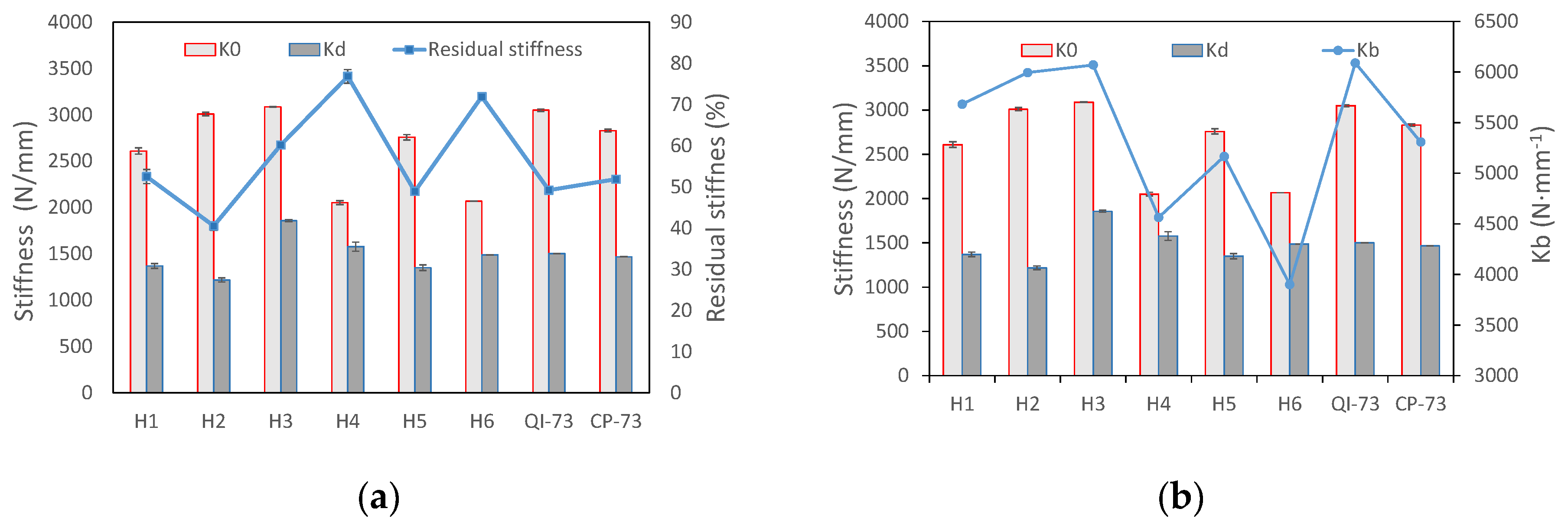


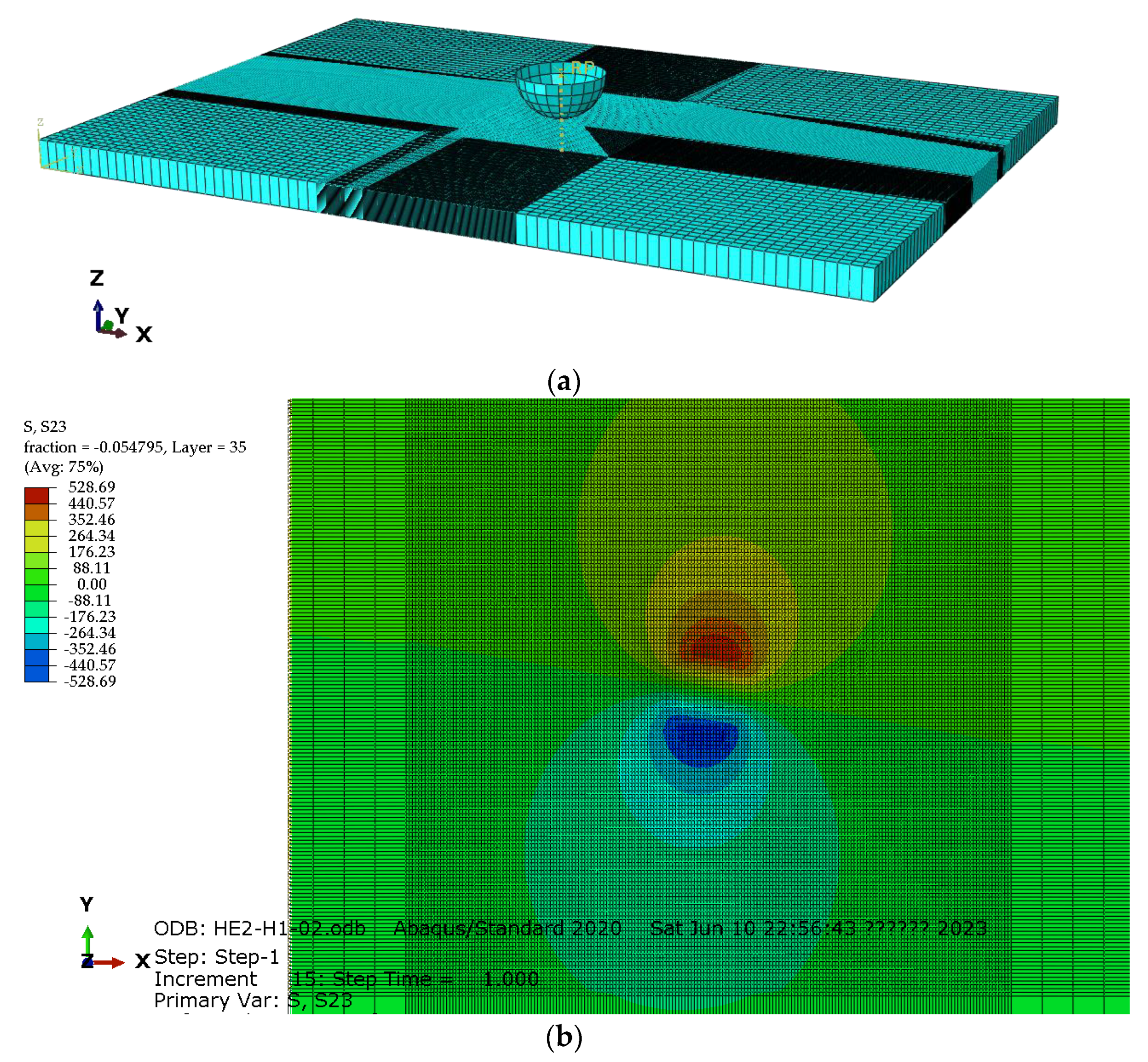
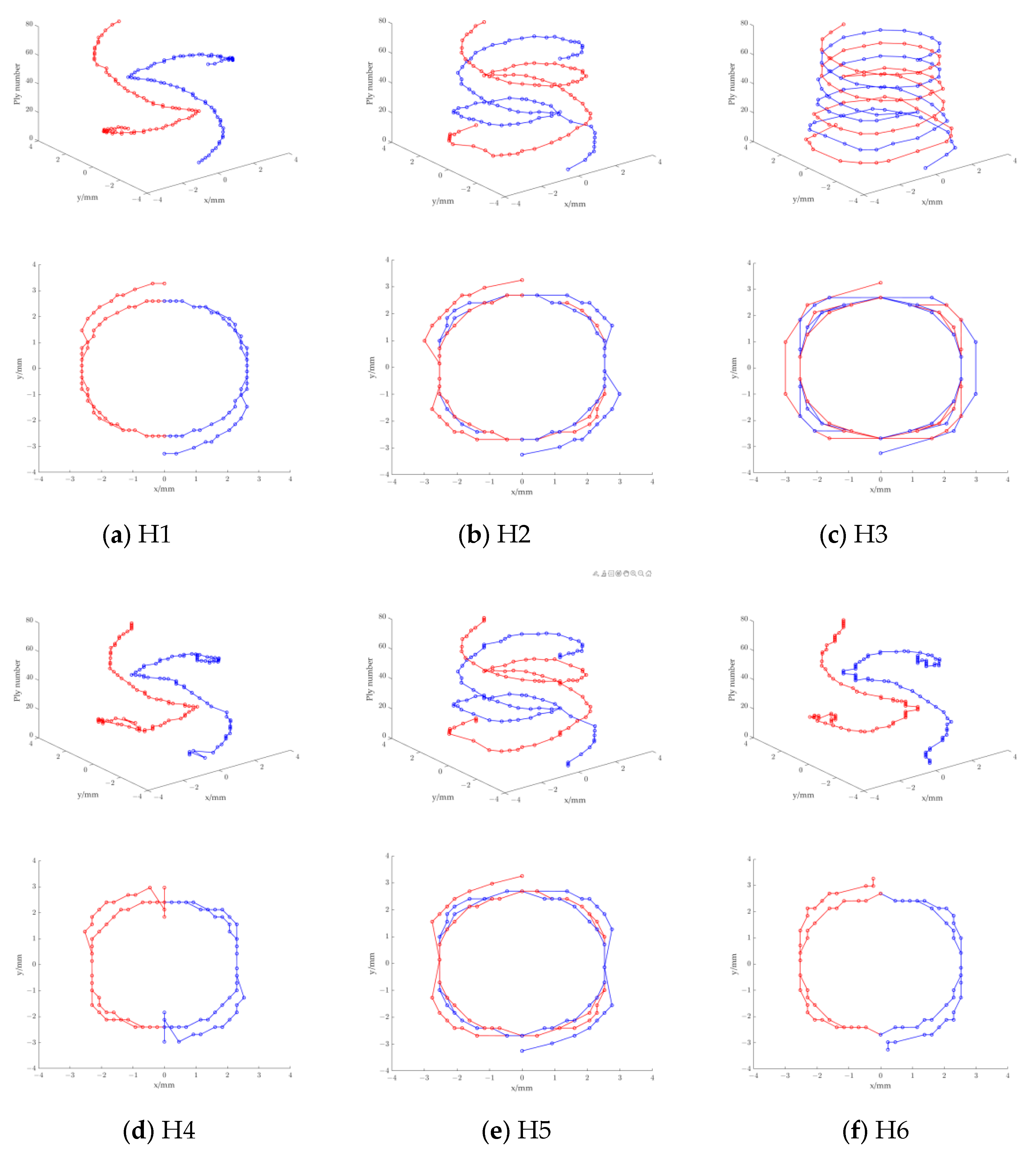
| Mechanical Properties | Value |
|---|---|
| 0°Tensile modulus (GPa) | 125.3 |
| 90°Tensile modulus (GPa) | 8.4 |
| 0°Tensile strength (MPa) | 2500 |
| 0°Compressive strength (MPa) | 780 |
| 90°Tensile strength (MPa) | 60 |
| 0°Interlaminar shear strength (MPa) | 88.5 |
| Samples | Stacking Sequence | Extensional Stiffness Coefficients (MPa) | Coefficients of Bending Stiffness Matrix (N·m) | The Critical Load of Buckling (N/mm) | |||||||
|---|---|---|---|---|---|---|---|---|---|---|---|
| H1 | [0/5/10/…/170/175/]s | 272 | 264 | 92 | 682 | 160 | 454 | 182 | 172 | 107 | 2115 |
| H2 | [0/10/20/…/160/170/180/10/20/…/170/]s | 272 | 264 | 92 | 611 | 164 | 517 | 186 | 85 | 54 | 2348 |
| H3 | [0/20/40/…/160/180/20/40/…/160/180/20/…/160/180/20/…/160/]s | 272 | 264 | 92 | 593 | 165 | 533 | 187 | 40 | 27 | 2385 |
| H4 | [0/0/0/0/0/5/10/15/20/…/60/65/70/80/90/100/110/115/120/…/165/170/175/]s | 304 | 233 | 91 | 907 | 126 | 297 | 148 | 125 | 68 | 1771 |
| H5 | [0/0/0/10/20/30/…/60/70/90/110/120/…/150/160/170/180/0/0/10/20/30/…/60/70/90/110/120/…/150/160/170/]s | 336 | 204 | 90 | 790 | 147 | 372 | 169 | 66 | 36 | 2101 |
| H6 | [0/0/0/0/0/2.5/5/7.5/10/12.5/15/20/25/30/35/40/50/60/…/120/130/140/145/150/155/160/165/167.5/170/172.5/175/177.5/]s | 415 | 159 | 73 | 1030 | 96 | 234 | 118 | 104 | 35 | 1569 |
| QI-73 | [(0/45/90/−45)9/0/(−45/90/45/0)9] | 272 | 264 | 92 | 589 | 165 | 537 | 187 | 12 | 12 | 1901 |
| CP-73 | [(0/90)36/0] | 340 | 332 | 24 | 725 | 28 | 675 | 50 | 0 | 0 | 2394 |
Disclaimer/Publisher’s Note: The statements, opinions and data contained in all publications are solely those of the individual author(s) and contributor(s) and not of MDPI and/or the editor(s). MDPI and/or the editor(s) disclaim responsibility for any injury to people or property resulting from any ideas, methods, instructions or products referred to in the content. |
© 2023 by the authors. Licensee MDPI, Basel, Switzerland. This article is an open access article distributed under the terms and conditions of the Creative Commons Attribution (CC BY) license (https://creativecommons.org/licenses/by/4.0/).
Share and Cite
Yu, Z.; Du, X.; Liu, R.; Xie, Q.; Zhang, X.; Zhu, Q. Increasing the Compressive Strength of Helicoidal Laminates after Low-Velocity Impact upon Mixing with 0° Orientation Plies and Its Analysis. Materials 2023, 16, 4599. https://doi.org/10.3390/ma16134599
Yu Z, Du X, Liu R, Xie Q, Zhang X, Zhu Q. Increasing the Compressive Strength of Helicoidal Laminates after Low-Velocity Impact upon Mixing with 0° Orientation Plies and Its Analysis. Materials. 2023; 16(13):4599. https://doi.org/10.3390/ma16134599
Chicago/Turabian StyleYu, Zhefeng, Xin Du, Rui Liu, Qiwu Xie, Xiaojing Zhang, and Qiao Zhu. 2023. "Increasing the Compressive Strength of Helicoidal Laminates after Low-Velocity Impact upon Mixing with 0° Orientation Plies and Its Analysis" Materials 16, no. 13: 4599. https://doi.org/10.3390/ma16134599
APA StyleYu, Z., Du, X., Liu, R., Xie, Q., Zhang, X., & Zhu, Q. (2023). Increasing the Compressive Strength of Helicoidal Laminates after Low-Velocity Impact upon Mixing with 0° Orientation Plies and Its Analysis. Materials, 16(13), 4599. https://doi.org/10.3390/ma16134599






